A red that sings

Jules Schmalzigaug was fascinated by colour. As were quite a few of the artists in our collection. Schmalzigaug knew the museum well. Together with our curator Adriaan Gonnissen, we explore the links between Schmalzigaug and the KMSKA’s other colourists. You might be surprised by some of the names that pop up.
Colour is a distinct line running through our collection and one that links the old masters with the moderns.
Adriaan Gonnissen: ‘In a letter to Umberto Boccioni, one of the figureheads of Italian Futurism, the Antwerp artist Jules Schmalzigaug (1882–1917) wrote: “Perhaps you have seen Rubens’ Adoration of the Magi in Antwerp? I know of no Impressionist painting with a red that sings the way King Melchior’s cloak does in that work.” The fact that he wrote this to a leading Futurist tells us a lot about the way he viewed Rubens’ Adoration.’
Schmalzigaug got to take part in 1914 in a major exhibition organized by the Futurists in Rome. He worked hard in his studio in Venice to create suitable paintings for such a ground-breaking event. But while Schmalzigaug entirely endorsed the Futurist Manifesto that Carlo Carrà had penned the previous year, his mind still strayed back to the KMSKA and to Rubens.
‘Carrà claimed that Impressionism had been the art of silence, definitely not the art of noise. The Futurists struggled against the nuanced, delicate shades of the Impressionists: the mauves, the pale greens, the pinks. They wanted to show the speed of modern urban life, with all the hubbub and different sounds that went with it. This required intense, loud colours, red being one of the most important. The reddest of reds; full and saturated.
Schmalzigaug was seemingly less interested in the subject matter of Rubens’ Adoration than in the colours. Which is how he came to make his own statement. He painted the same full colours in rhythmic arabesques that suggest things like the contours of girls gyrating in electrically lit dancehalls. Schmalzigaug’s colourful arabesques evoke speed and movement, which are the most important motifs in his Futurist oeuvre.’
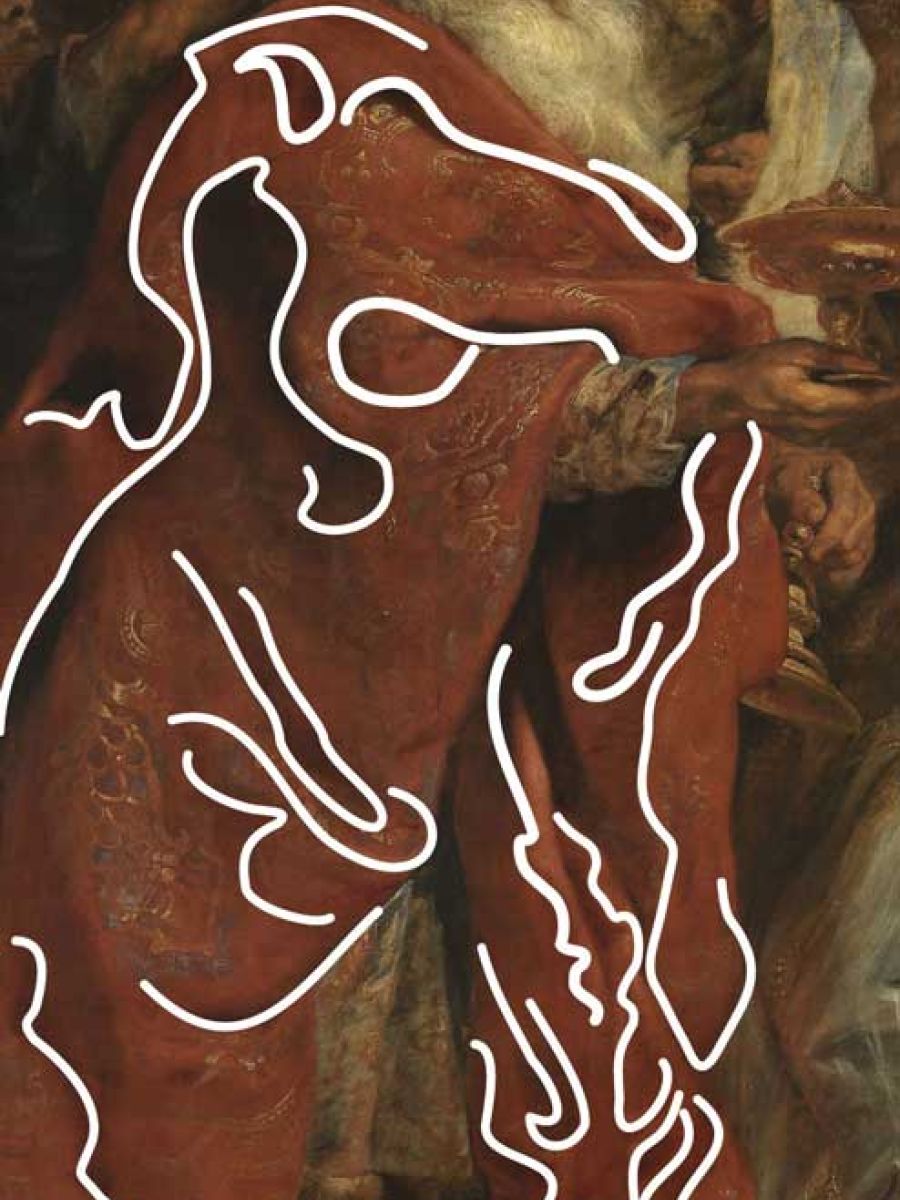
Melchior’s cloak is full of arabesques or rhythmically flowing lines.
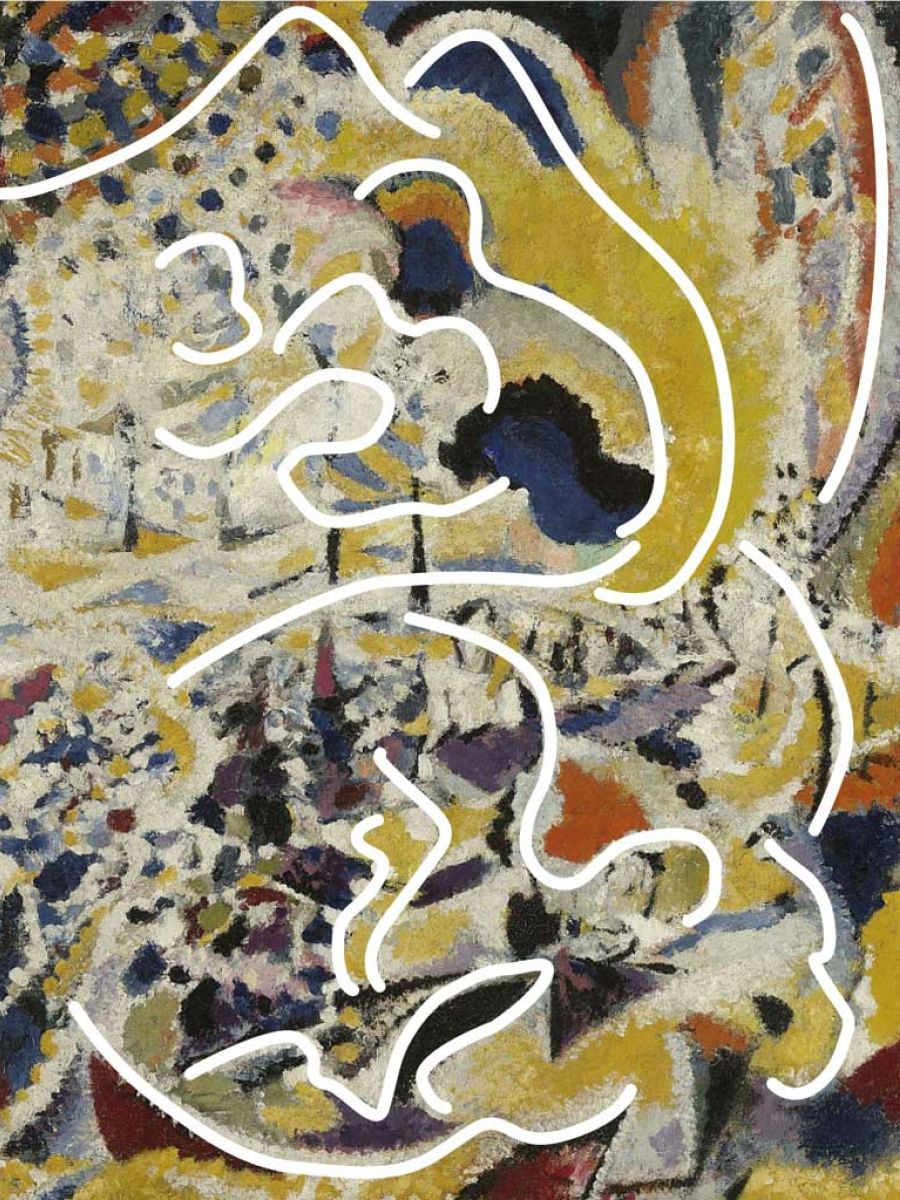
Some of the many lines of movement in Schmalzigaug’s Rhythm of Light Waves: Street + Sun + Crowd (detail).
You mean he found the same repetitive lines of movement in Rubens?
‘The Futurists claimed to be doing away with tradition, that they were radically new. At the end of the day, though, they were all looking at what had come before them. Schmalzigaug rode the wave of his knowledge and his artistic exemplars. He homed in explicitly on King Melchior’s cloak in The Adoration of the Magi. The movement, the arabesques, he detected there are expressive and dynamic. The cloak seems to lift in the breeze, which is Rubens being theatrical. “Opera in paint”, as the Rubens specialists at our museum like to call it.
Schmalzigaug painted a kind of cut-out from a work by Rubens. Abstract artists often do that – they blow up a particular element until the motif fills an entire canvas. Several geometric abstract artists, for instance, looked back to Spilliaert, who was himself on the verge of abstract art.’
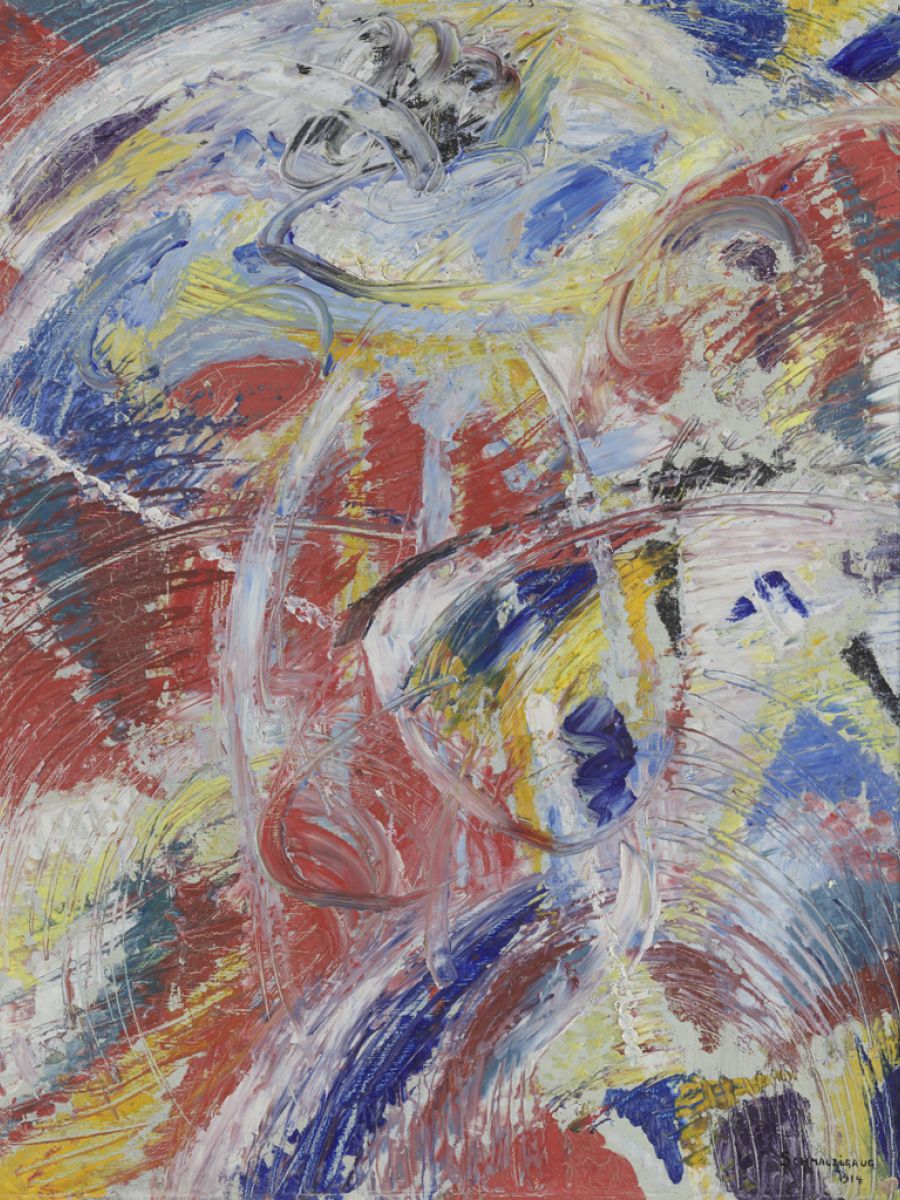
Development of a Theme in Red: Carnival - the first Belgian abstract painting.
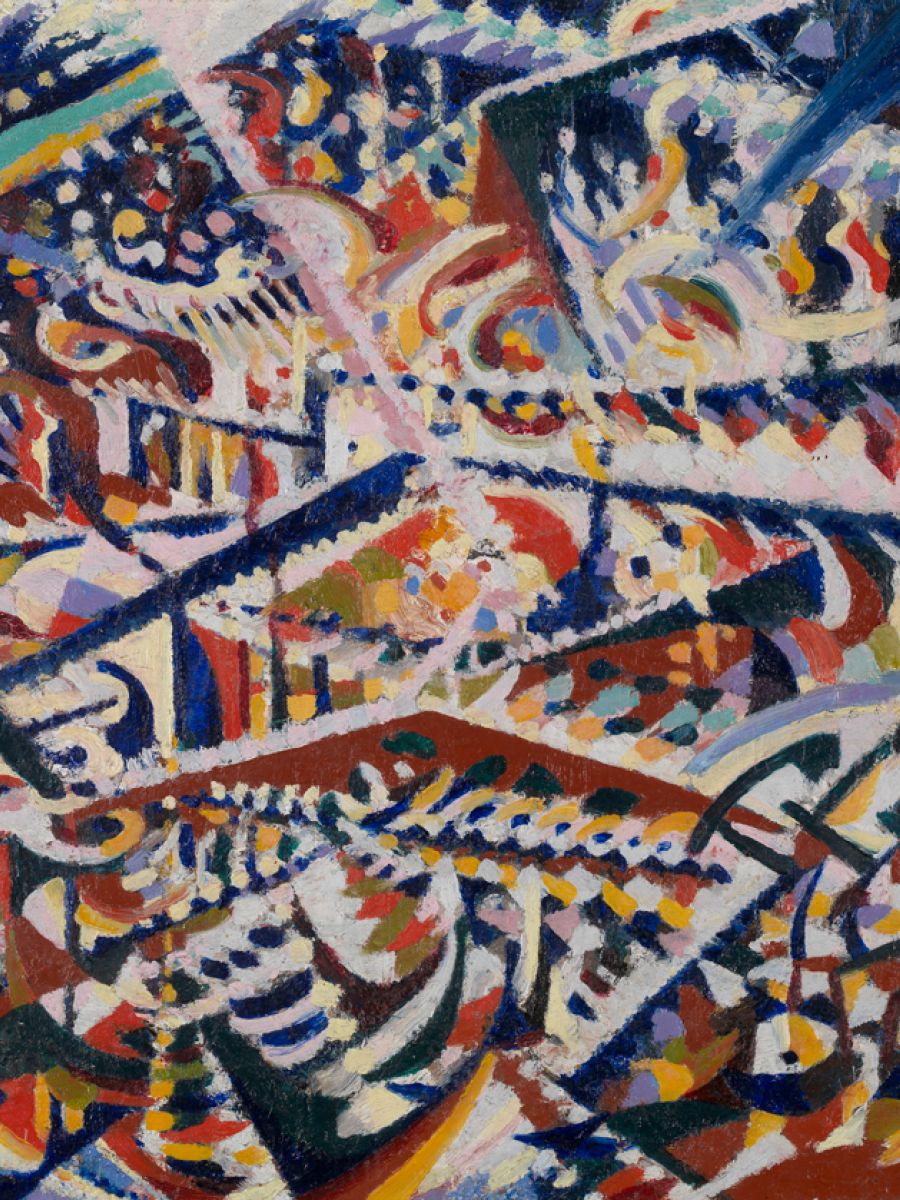
In the painting Light + Mirrors and Crowds: Interior of a Popular Dancehall in Antwerp - light radiates from the most intense of colours.
Is it fair to say that Schmalzigaug stuck closer to reality than the Italian Futurists did?
‘Maintaining a certain link with reality is typical of Belgian abstract art. But he did create the first truly abstract oil painting in Belgian art history: Development of a Theme in Red: Carnival. It’s a pretty crazy painting actually. Although as far as we know, he only did one like that. Colour was his real obsession: as far as Schmalzigaug was concerned, it defined every form. At its most intense, there is no longer any trace of contours: the light comes from the intensity of the pigments themselves. It’s all very different to the illusion of light and shadow that you still find in the Impressionists. Futurist techniques were ideal for Schmalzigaug when it came to painting colour.’
He also looked to James Ensor for his colour.
‘Yes. He once wrote that the Ostend light had given Ensor “a pretext” for painting “improbable colouristic harmonies” with the most trivial of subject matter. Clashing, contrasting colours: blue next to red, yellow and green. This is the Ensor of Christ’s Entry into Brussels or The Intrigue – pure colours that are present in the painting as a block.’
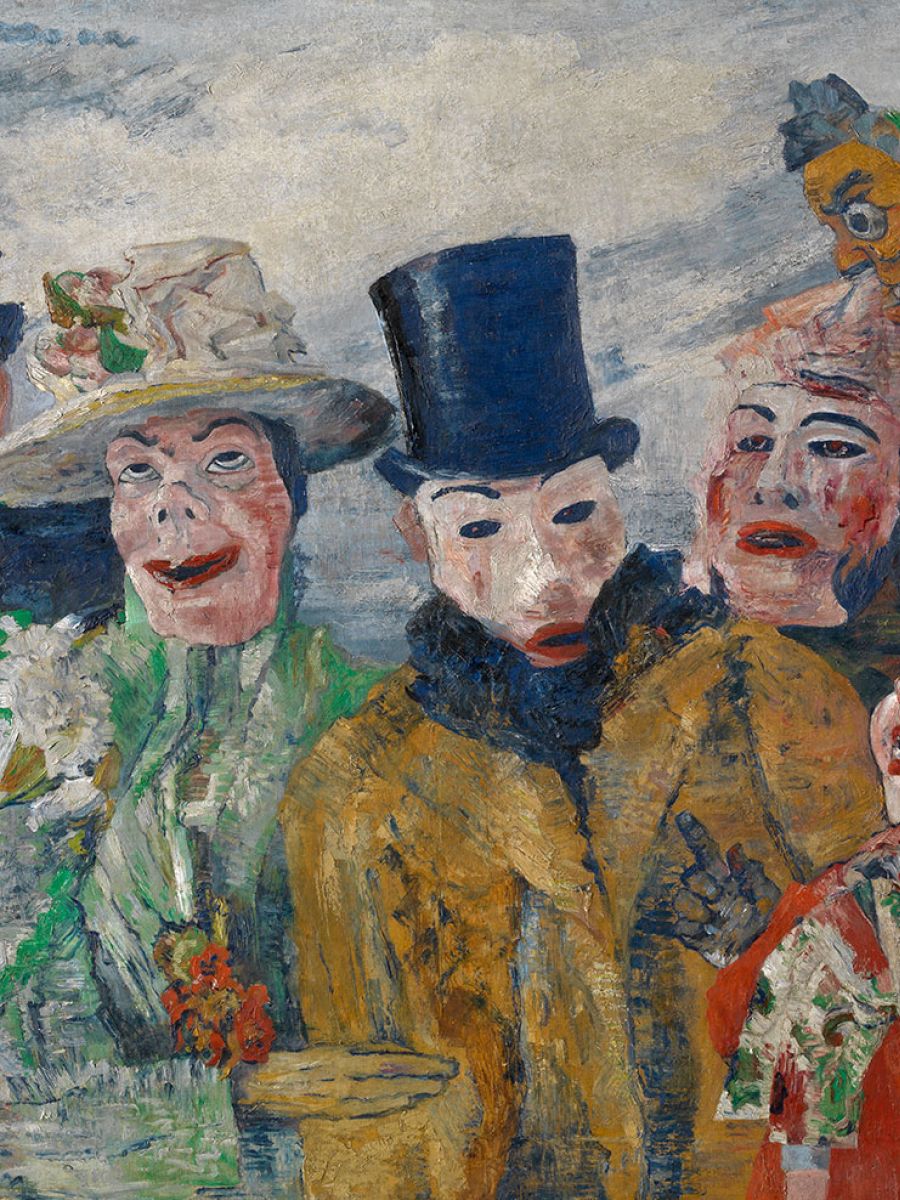
Unmixed and clashing colours in Ensor’s studio.
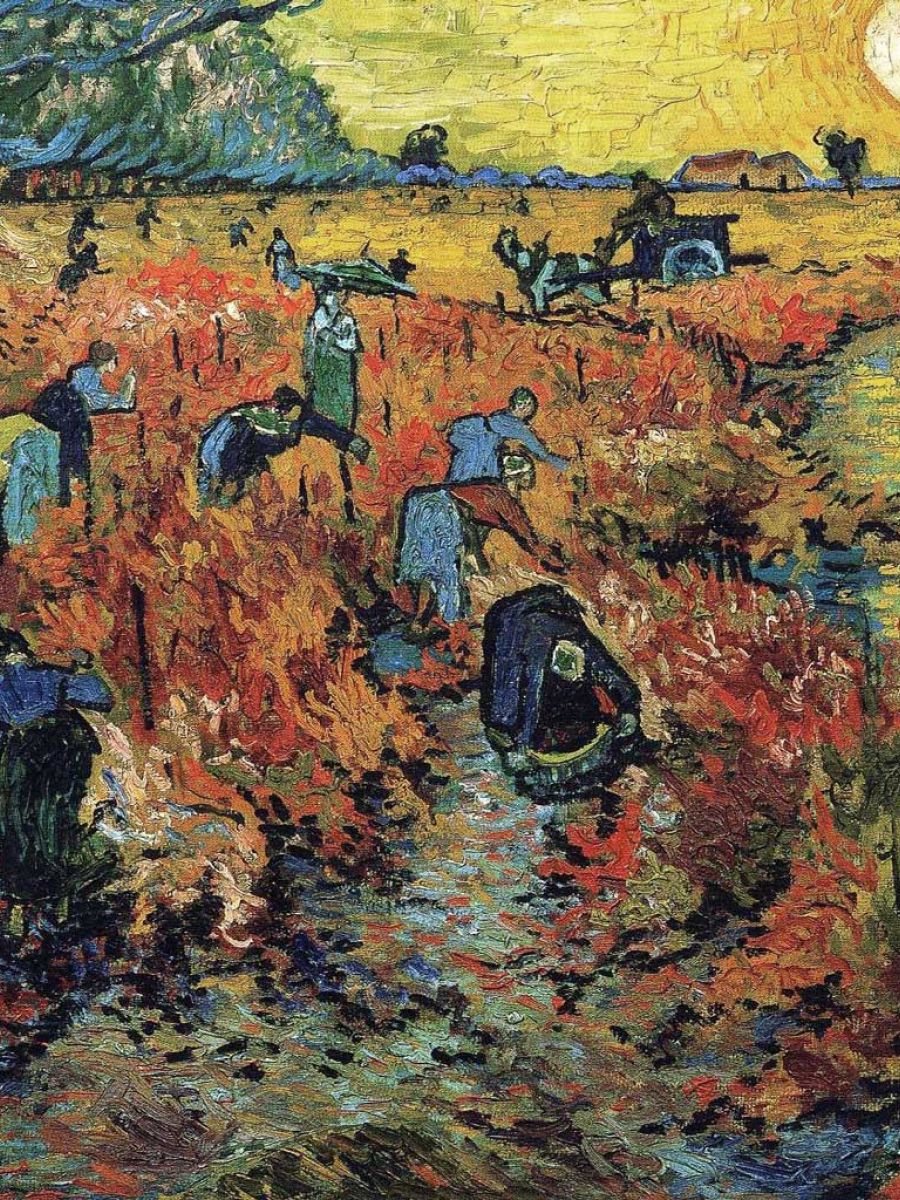
Van Gogh painted this colourful vineyard in the studio too.
So the subject doesn’t matter any more?
‘In a way, you can interpret a dancehall in Schmalzigaug, a carnival scene in Ensor or a grape harvest in Van Gogh as pretexts for experimenting with unmixed colours in the studio. They transcend reality. Van Gogh saw and sketched his famous Red Vineyard scene lots of times, but he painted it in the studio. And Ensor’s imagination was triggered by a carnival mask. I think the association between sounds and colours is very important in this regard: the symphony of colour. Giving voice to colour was essential to Schmalzigaug.’
Why was he so preoccupied with colour?
‘Schmalzigaug was genuinely searching at first. For a while, his drawings were almost like Xavier Mellery’s, lacking any colour at all. An occasional stripe or patch of red then starts to pop up in a painting. Later, as the secretary of the arts society Kunst van Heden, Schmalzigaug came across the work of Jakob Smits. He wrote as early as 1908 how much he admired the bold way in which Smits used robust colours and fierce contrasts. Smits painted a woman’s dress in bright, fairly flat red, for instance, with white walls and black panelling. He basically worked in blocks of colour.’
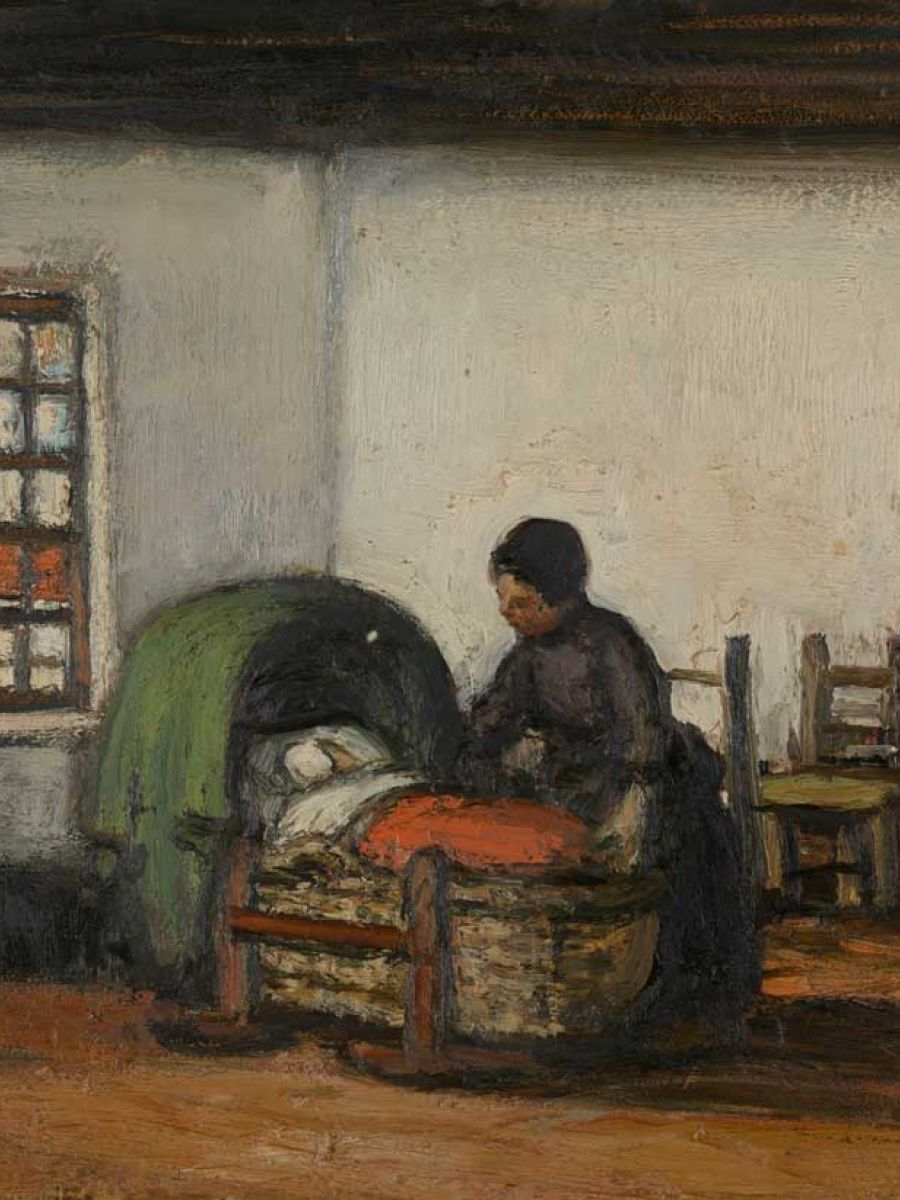
Jakob Smits painted blocks of intense colour with lots of white: a crucial inspiration to Schmalzigaug.
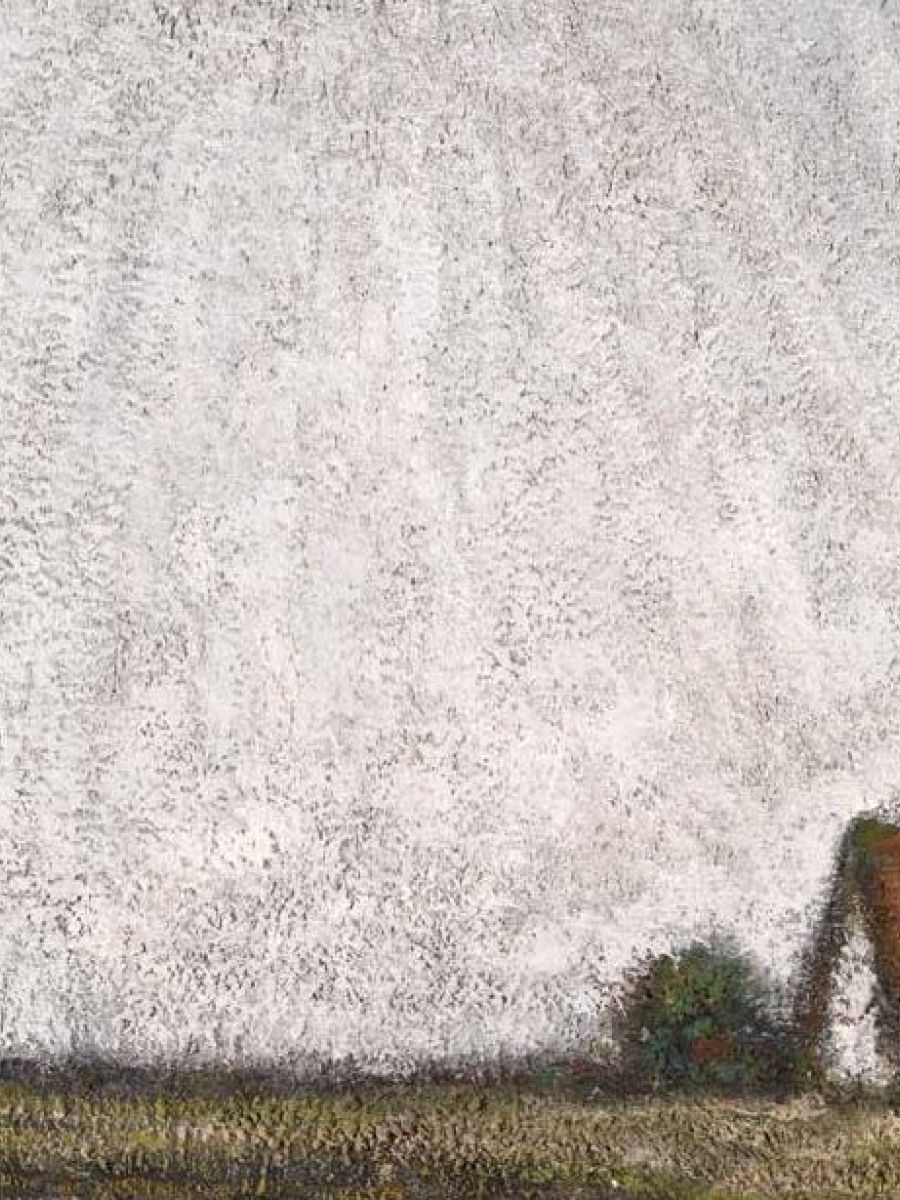
Schmalzigaug actually visited Jakob Smits, didn’t he?
‘Schmalzigaug spent the Christmas of 1912 in Antwerp and took the opportunity to visit Smits at his studio. It turned out to be a career-defining moment. Having returned to Italy, Schmalzigaug set up his studio in the same way as Smits, using mirrors, fabrics and shutters to filter and reflect the incoming light. He began to spread his paint out a little more, but for the most part he gave free rein to the snow-white, grainy element he found in Smits. It all made his work much lighter, while Schmalzigaug’s expanses of colour simultaneously became wider and more independent.
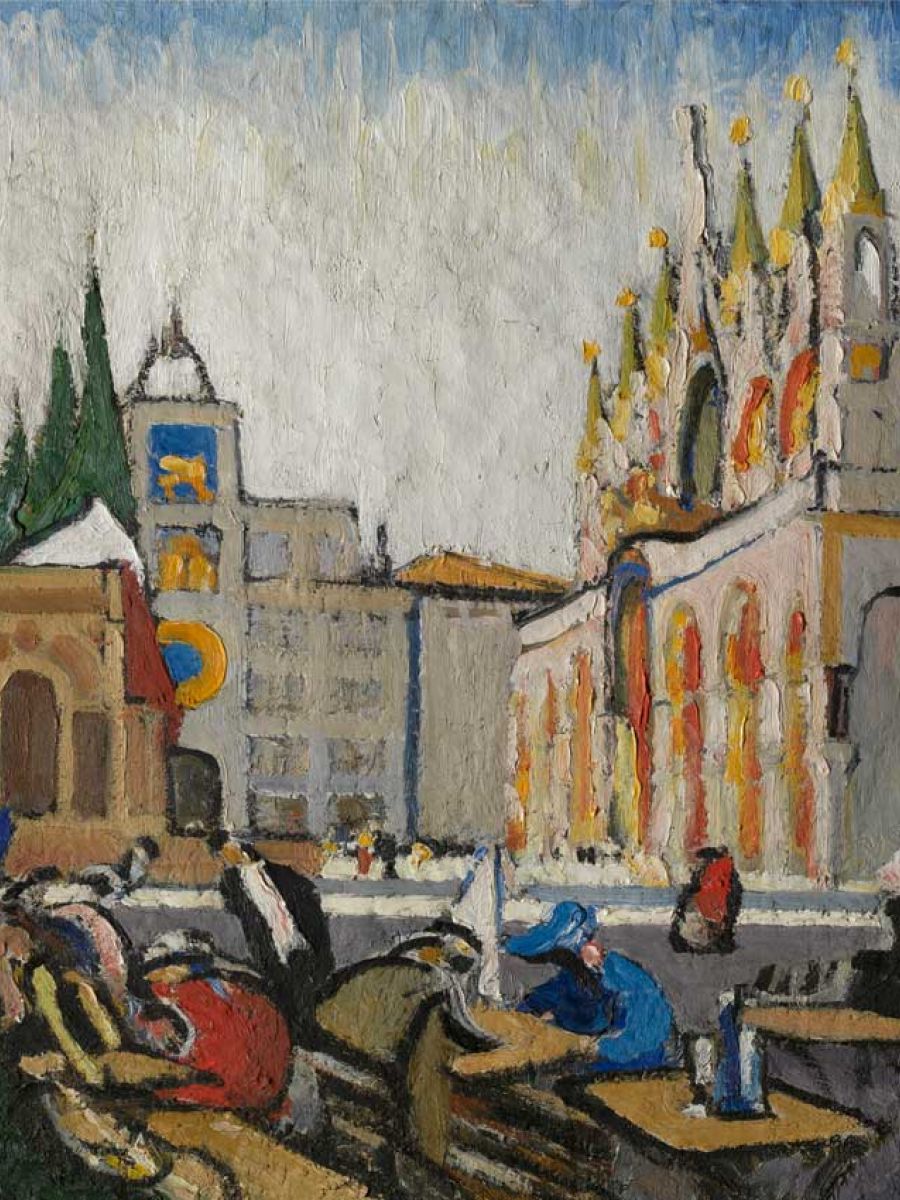
Schmalzigaug gradually adjusted his style after visiting Jakob Smits’ studio.

Jakob Smits as teacher of technique and materials?
‘Very much so. His thick, grainy, solid paint and his ideas about light were crucial. Both artists worked with luminous crusts of paint. The twentieth century was all about paint: what can I do with it? Schmalzigaug wanted to find a play of light, a rhythm, which was only possible through colour.
Rubens’ theatrical qualities and arabesques, Ensor’s full, singing colour and Smits’ whites and crusts of paint: these, in a nutshell, represent the influence of Belgian art on Schmalzigaug.’
When the KMSKA reopens, you’ll be able to compare The Adoration of the Magi, The Intrigue and various paintings by Jakob Smits with Schmalzigaug’s work. In the meantime, you can admire Ensor, Smits and Schmalzigaug – along with many other Belgian modernists – at the exhibition Fantastic Real at the Kunsthalle in Munich until 6 March.



